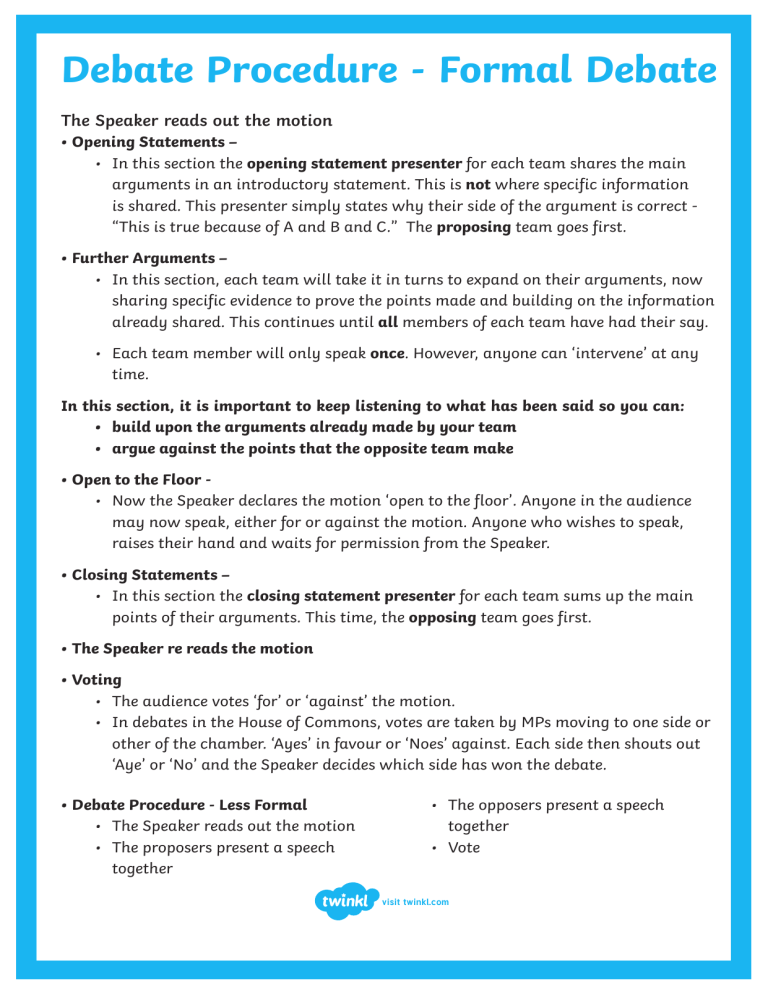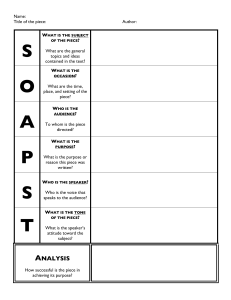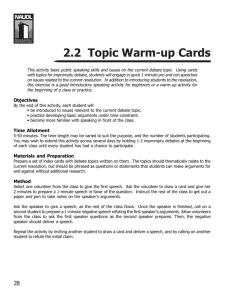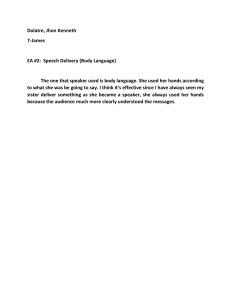
Debate Procedure - Formal Debate The Speaker reads out the motion • Opening Statements – • In this section the opening statement presenter for each team shares the main arguments in an introductory statement. This is not where specific information is shared. This presenter simply states why their side of the argument is correct “This is true because of A and B and C.” The proposing team goes first. • Further Arguments – • In this section, each team will take it in turns to expand on their arguments, now sharing specific evidence to prove the points made and building on the information already shared. This continues until all members of each team have had their say. • Each team member will only speak once. However, anyone can ‘intervene’ at any time. In this section, it is important to keep listening to what has been said so you can: • build upon the arguments already made by your team • argue against the points that the opposite team make • Open to the Floor • Now the Speaker declares the motion ‘open to the floor’. Anyone in the audience may now speak, either for or against the motion. Anyone who wishes to speak, raises their hand and waits for permission from the Speaker. • Closing Statements – • In this section the closing statement presenter for each team sums up the main points of their arguments. This time, the opposing team goes first. • The Speaker re reads the motion • Voting • The audience votes ‘for’ or ‘against’ the motion. • In debates in the House of Commons, votes are taken by MPs moving to one side or other of the chamber. ‘Ayes’ in favour or ‘Noes’ against. Each side then shouts out ‘Aye’ or ‘No’ and the Speaker decides which side has won the debate. • Debate Procedure - Less Formal • The Speaker reads out the motion • The proposers present a speech together • The opposers present a speech together • Vote visit twinkl.com





